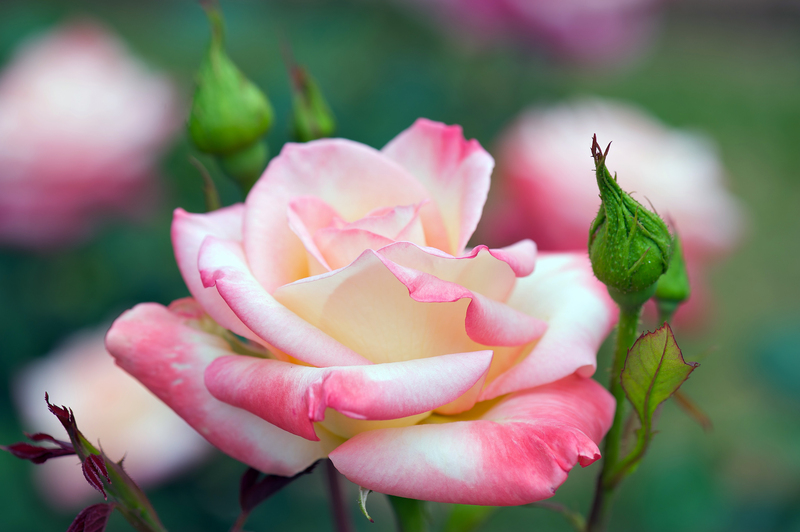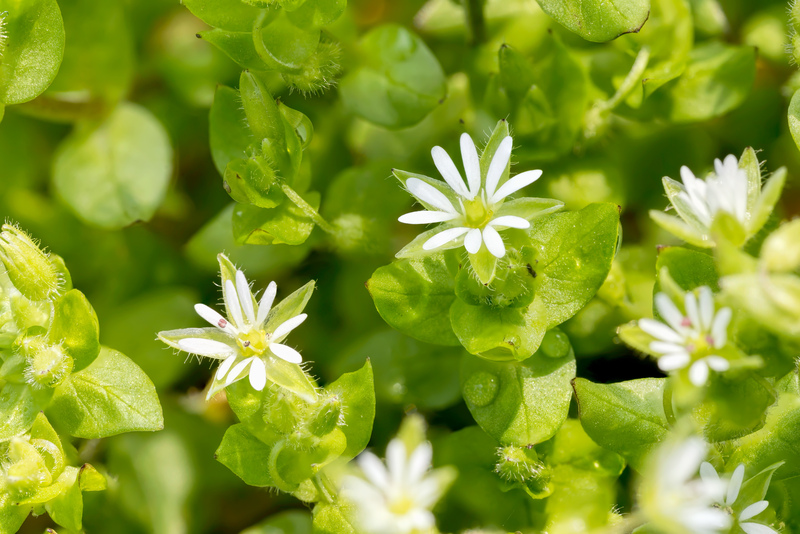How to Grow Exotic Tropical Plants in the Cool UK Climate
Dreaming of lush palms, vibrant hibiscus, or dramatic banana plants swaying in your UK garden? While the UK climate might not seem ideal for tropical flora, with the right knowledge and approach, growing exotic tropical plants in the United Kingdom is possible and highly rewarding. This comprehensive guide will walk you through each step to transform your garden, conservatory, or indoor spaces into a thriving, tropical paradise -- even amidst Britain's unpredictable weather.
Understanding Tropical and Exotic Plants
Before diving into the how-to, it's vital to understand what tropical and exotic plants are. These are species native to the warm, humid climates of the tropics and subtropics. They generally require:
- Warm temperatures and minimal frost
- Consistent moisture or humidity
- Rich, well-drained soil
- Plenty of sunlight and long days
Popular examples include banana plants (Musa), tree ferns (Dicksonia antarctica), cannas, gingers, bird of paradise (Strelitzia), and palms.

Can You Really Grow Tropical Plants in the UK?
Yes! While the UK is known for its cool, variable weather, many gardeners successfully cultivate tropical plants outdoors and indoors by creating the ideal microclimate. The secret is understanding the needs of each species and providing protection and extra care during cold periods.
Key Challenges in the UK Climate
- Low winter temperatures and risk of frost
- Shorter days and reduced sunlight in winter
- High rainfall that can cause waterlogging or root rot
- Occasionally, dry heatwaves in summer (unusual, but possible risk)
Choosing Tropicals Adaptable to UK Conditions
The first rule in successfully growing exotic tropical plants in cool climates is to select species or cultivars with the greatest cold tolerance, or that can be wintered indoors. Some tropical and subtropical plants can handle brief frosts if protected.
- Hardy bananas: Musa basjoo is an excellent, hardy banana that can survive UK winters with protection for the roots and trunk.
- Tree ferns: Dicksonia antarctica is surprisingly tough and can become a dramatic garden centerpiece with winter fleecing.
- Hardy palms: Trachycarpus fortunei (Windmill Palm) and Chamaerops humilis (European Fan Palm) are favorites for their resilience.
- Cannas and gingers: Many types can survive if their rhizomes are lifted in winter.
- Exotic perennials: Plants like Hedychium (ginger lily) and Tetrapanax (rice paper plant) add a jungle-style touch.
- Indoor/greenhouse favorites: Hibiscus, bird of paradise, orchids, and philodendrons can thrive inside conservatories or sunny rooms.
Pro Tip: Start with just a few easy-care exotics, then diversify as your experience and confidence grow!
Selecting the Right Location: Outdoors or Indoors?
Where you choose to grow your plants is crucial for success:
- South-facing gardens are the sunniest and warmest, ideal for outdoor exotics.
- Sheltered spots -- against house walls or fences -- offer extra warmth and wind protection.
- Conservatories and greenhouses are perfect for protecting true tropical plants year-round.
- Bright, warm rooms inside your home make excellent mini-jungles!
Tip: Improving the microclimate by planting next to heat-retaining bricks or paving can significantly boost plant growth.
Soil Preparation and Drainage Matters
Most tropical plants dislike sitting in cold, wet soil. Good drainage with ample organic material is essential. Here's how to prepare your ground:
- Mix in plenty of compost or well-rotted manure for fertility and moisture retention.
- Work sharp sand or horticultural grit into heavy clay soils to improve drainage.
- For container growing, use a loam-based compost with added bark, grit, and perlite for air and drainage.
Avoid waterlogging at all costs, as it can rot tender roots during cold spells!
Watering and Humidity for Tropical Growth
Tropical species generally love moist, but not soggy, soil. Regular watering is essential, especially during hot spells or for container plants. At the same time, many tropicals appreciate higher humidity:
- Mist indoor plants or group them together to create a humid microclimate.
- Use mulch around the roots outdoors to conserve moisture.
- Install water features, ponds, or frequent overhead watering to increase garden humidity.
Note: Reduce watering in winter when plants are dormant, especially for those in cool greenhouses.
Feeding Exotic Plants for Lush Growth
Tropical plants are hungry plants. Fertilise regularly with:
- Seaweed-based liquid feeds (for trace elements and root health)
- Slow-release fertilisers in early spring
- High-nitrogen feeds during the main growing season for leafy growth
Monitor the leaf colour and vigour: pale or yellow leaves often signal nutrient deficiencies.
Protecting Exotic Plants from Cold and Frost
This is the most critical aspect of growing tropical plants in the UK. Most tender perennials and exotics suffer or die in freezing temperatures. Here's how to keep them safe:
Winter Protection Methods
- Fleece or hessian wraps protect trunks and crowns of bananas, tree ferns, and palms.
- Mulch thickly with straw, bark, or leaves to insulate roots.
- For containers, move pots into a greenhouse, conservatory, or frost-free shed.
- Lift and store tender rhizomes or bulbs (like cannas and dahlias) somewhere dry and frost-free.
Tip: Always remove winter wrappings in spring to avoid rot and encourage new growth!
Extending the Season: Tricking Tropicals into Thriving
Create a tropical microclimate in the UK by:
- Planting near sun-baked walls that radiate heat overnight.
- Adding clear plastic cloches or cold frames to raise temperature in early spring and late autumn.
- Using windbreaks (fences, trellises, or dense evergreen hedges) to cut cold winds and retain warmth.
- Grouping tender plants together so they benefit from each other's humidity and shelter.
Overwintering Indoors
Some of the best exotic tropical plants for the UK climate must be overwintered under cover. Kitchens, bathrooms, porches, and warm bedrooms make great winter homes for hibiscus, mandevillas, and small banana plants. Greenhouses and heated conservatories are ideal for larger specimens.
Popular Exotic Tropical Plants You Can Grow in the UK
- Musa basjoo (Hardy banana): Striking foliage, rapid growth, survives even in northern UK with root protection.
- Trachycarpus fortunei (Windmill palm): Exceptionally cold-hardy palm for British gardens.
- Dicksonia antarctica (Tree fern): Likes shade, tolerates UK winters if trunk protected with fleece and mulch.
- Canna lily: Bright flowers, lush leaves -- lift rhizomes after first frost for winter storage.
- Hedychium (Ginger lily): Beautifully scented, dramatic foliage, survives UK winters with a thick mulch.
- Hostas and Fatsias: Not truly tropical, but give a jungly feel and are fully hardy across the UK.
- Tetrapanax papyrifer (Rice paper plant): Huge leaves, fast growth; mulch roots well in winter.
- Strelitzia reginae (Bird of Paradise): Indoor or heated conservatory for winter, can sit outdoors in summer.
- Alocasia: Large, arrow-shaped leaves, best grown indoors except in London's warmest microclimates.
Bonus: Creating that Tropical Jungle Look
Success with growing exotic tropical plants in the UK is part science, part art. Combine tough exotics with large-leaved perennials, climbers, and contrasting foliage for a truly immersive, lush effect.
- Massing together plants with different shaped leaves (palms, ferns, cannas, bamboos) gives a jungle appearance and helps trap humidity.
- Add height (with tree ferns, bananas, and palms) and underplant with ferns, ginger lilies, or hostas.
- Use colourful pots or bright flowering exotics (cannas, dahlias, hibiscus) for drama.
- Incoporate water features or pebble pools for added humidity and visual appeal.
- Mix in hardy climbers like passion flowers, which echo the exotic look and survive UK winters.
Common Mistakes to Avoid When Growing Tropicals in the UK
- Overwatering in winter: A major cause of death in tropical plants -- always let the top few centimetres of soil dry for potted plants over cold periods.
- Poor drainage: Heavy, wet clay will rot roots -- always improve soil structure in planting holes.
- Insufficient protection: Don't forget to wrap or move tender plants before the first frost, not after!
- Fertilising too late: Don't apply high-nitrogen food after late summer, since it promotes soft growth vulnerable to autumn chills.
- Ignoring microclimates: Try south or west-facing aspects for best results, and don't plant tender exotics in cold, windswept spots.
Tip: Keep a gardening diary to record which exotic plants do well in your specific location for even better results year after year.

FAQs: Exotic Tropical Plant Care in Cool Climates
Can I grow bananas outdoors in the UK?
Yes, hardy bananas like Musa basjoo will survive outdoors. Mulch their roots heavily in winter and wrap the stem with fleece for best results.
Which is the easiest palm for UK gardens?
Trachycarpus fortunei (windmill palm) is the hardiest, surviving down to -15°C if established and sheltered.
How do I increase humidity for exotics indoors?
Group plants closely, use pebble trays filled with water, and mist leaves occasionally. Avoid placing near radiators or heat sources that dry air.
Can tropical plants survive in pots?
Absolutely! Pots allow you to use free-draining compost and move plants into shelter over winter. Always monitor watering carefully, as containers dry out faster in summer but are damper in winter.
Conclusion: Bringing the Tropics to Your UK Garden
Growing exotic tropical plants in the UK climate is achievable with a little planning and protection. The keys to success include choosing the right plants, improving soil and drainage, providing winter protection, and making the most of microclimates -- both indoors and outdoors. With attention to their needs, you can create a bold, verdant, and utterly exotic oasis that impresses both you and your visitors, year after year.
Ready to get started? Choose a hardy banana, palm, or canna, pick a sunny, sheltered spot, and see how easy -- and rewarding -- it is to grow tropical plants in Britain's cool climate.
Your garden might not quite become the Caribbean, but with perseverance and care, it will feel a world away from the ordinary UK landscape!